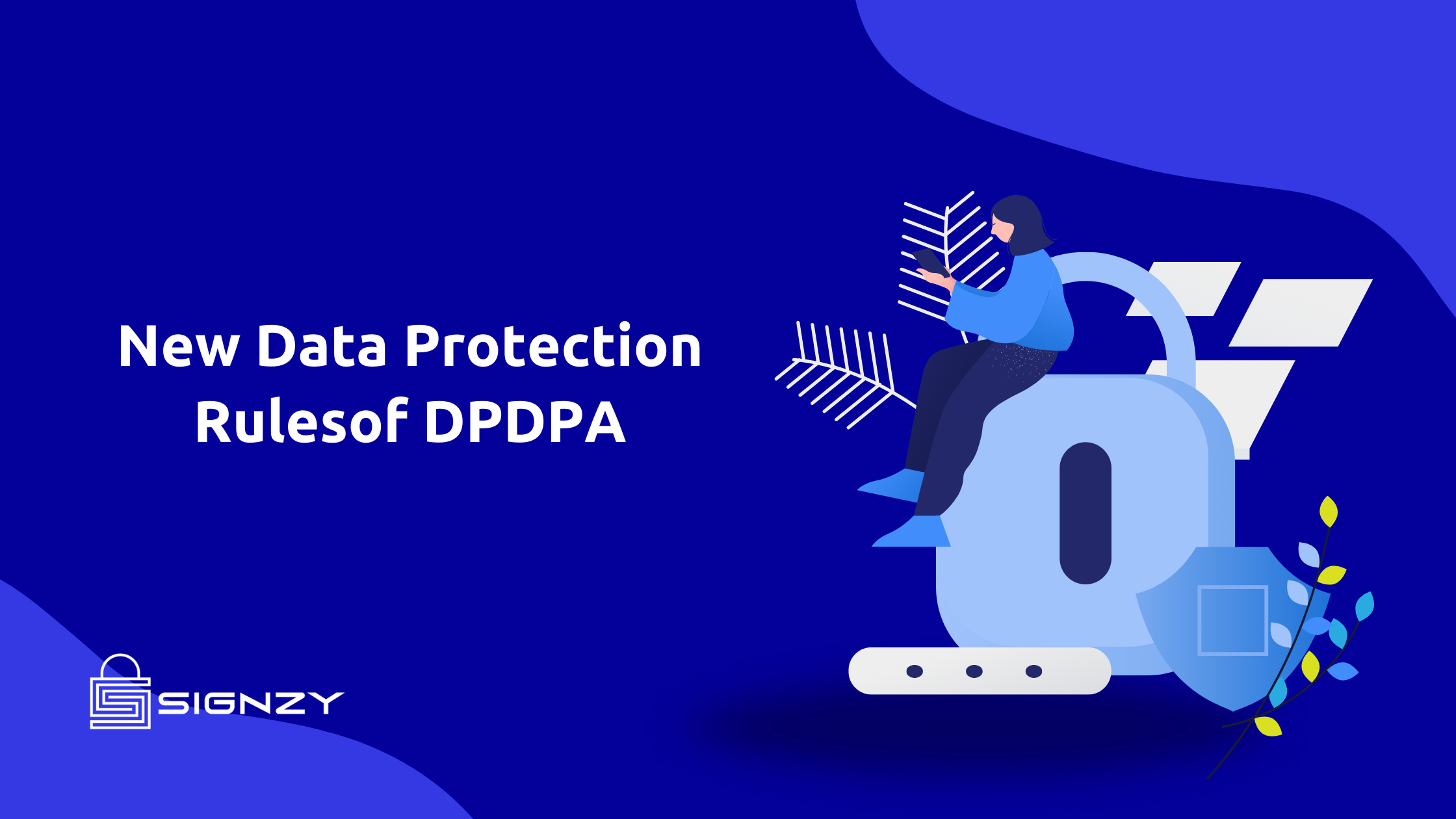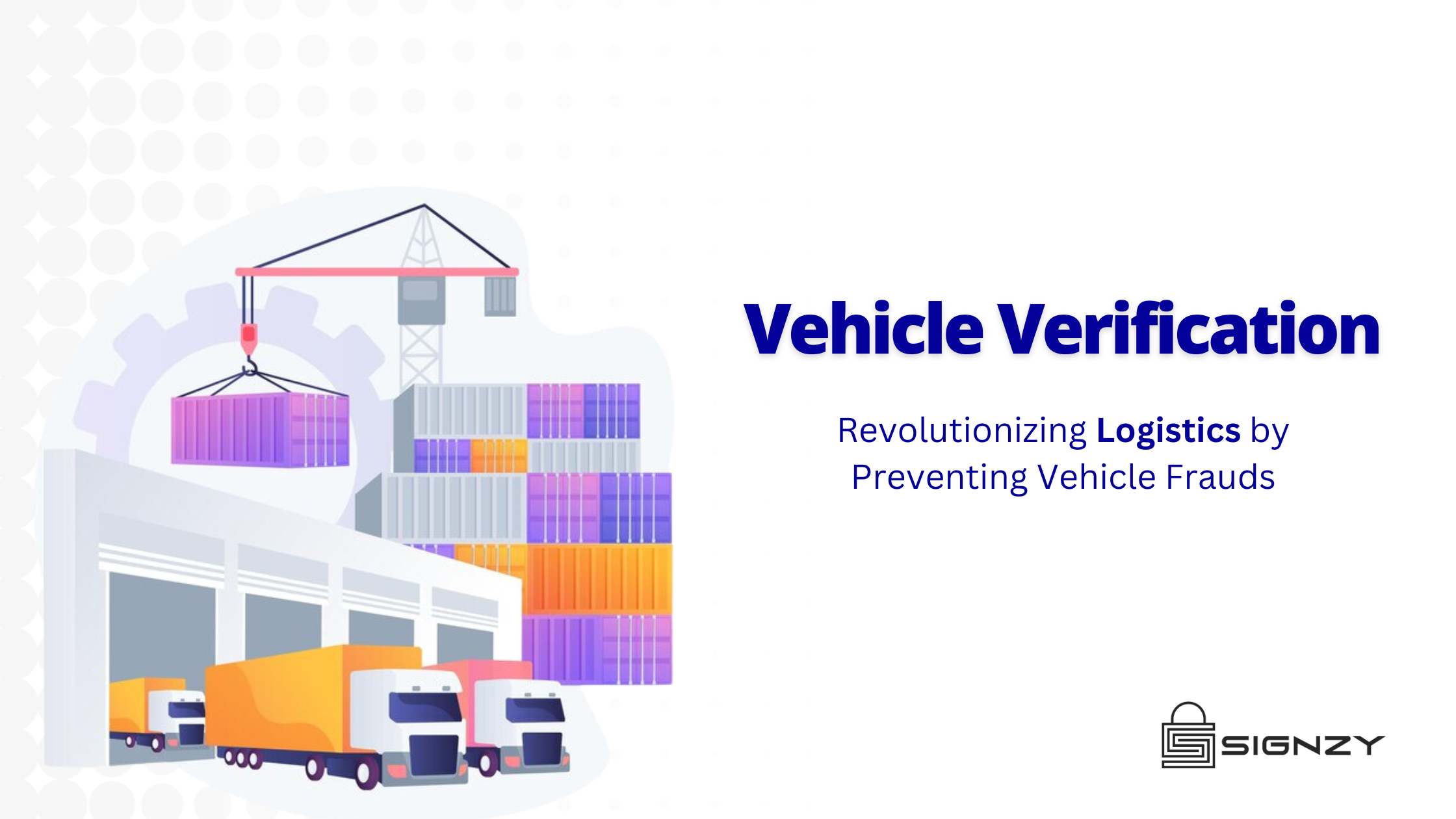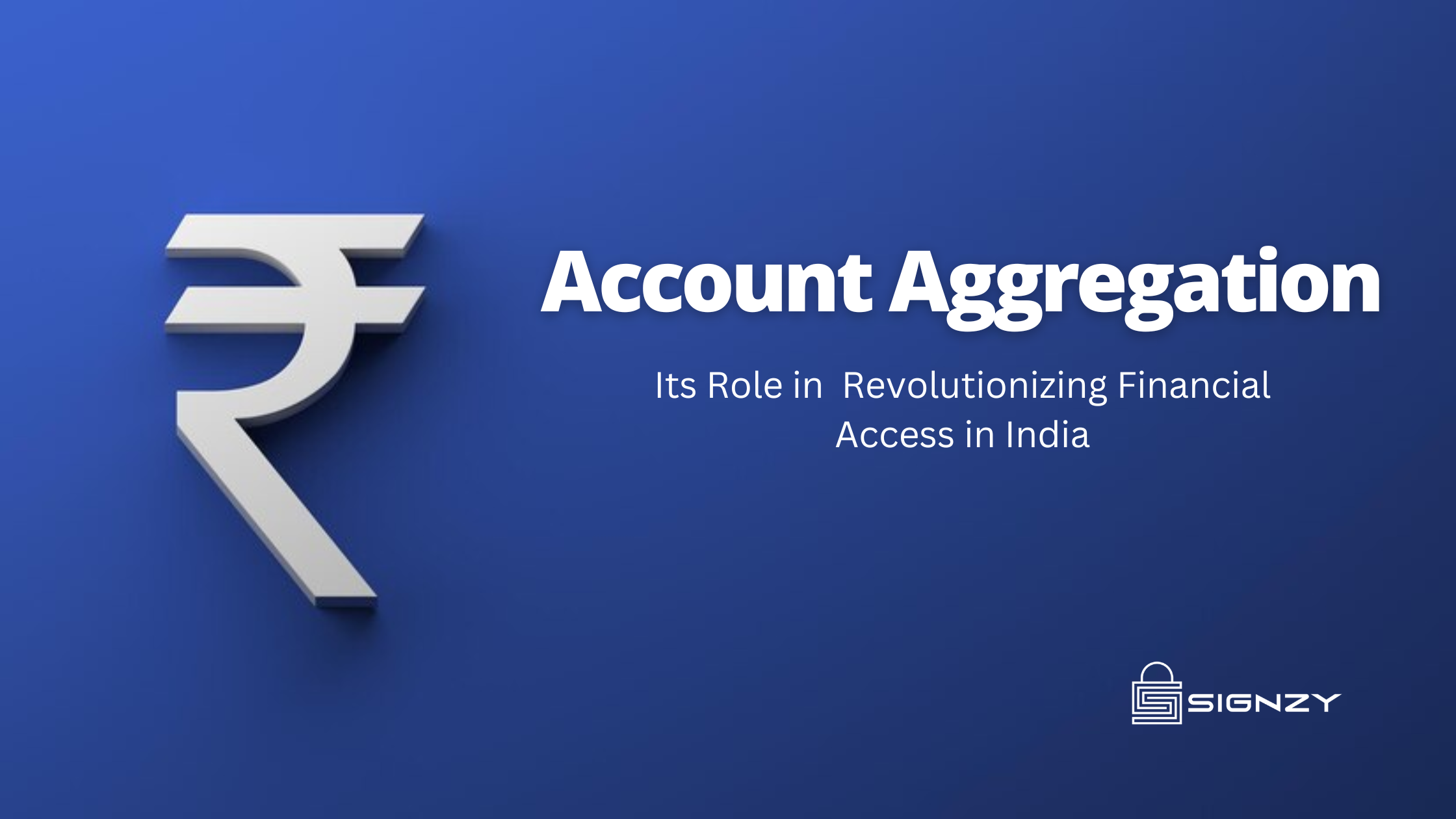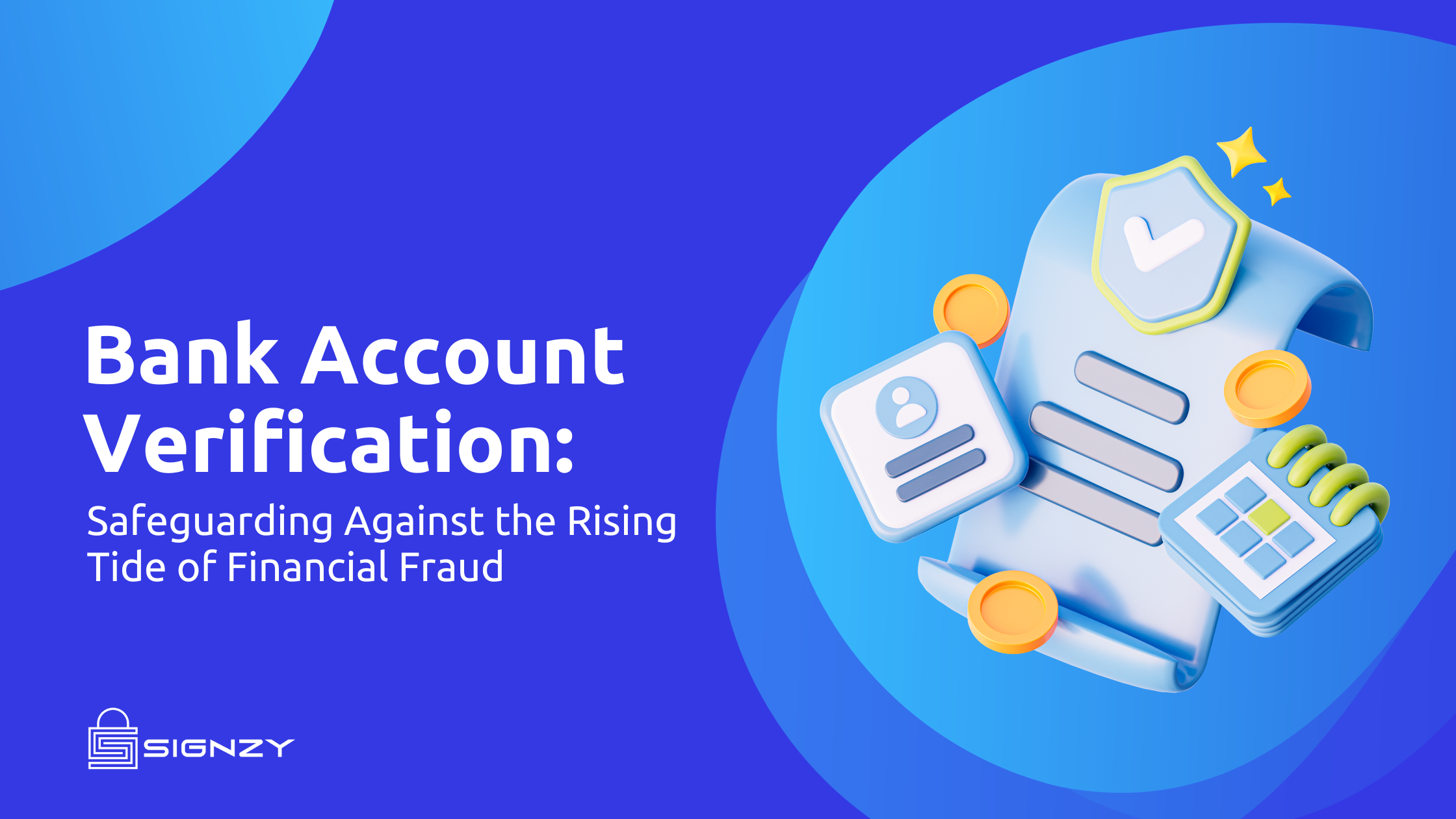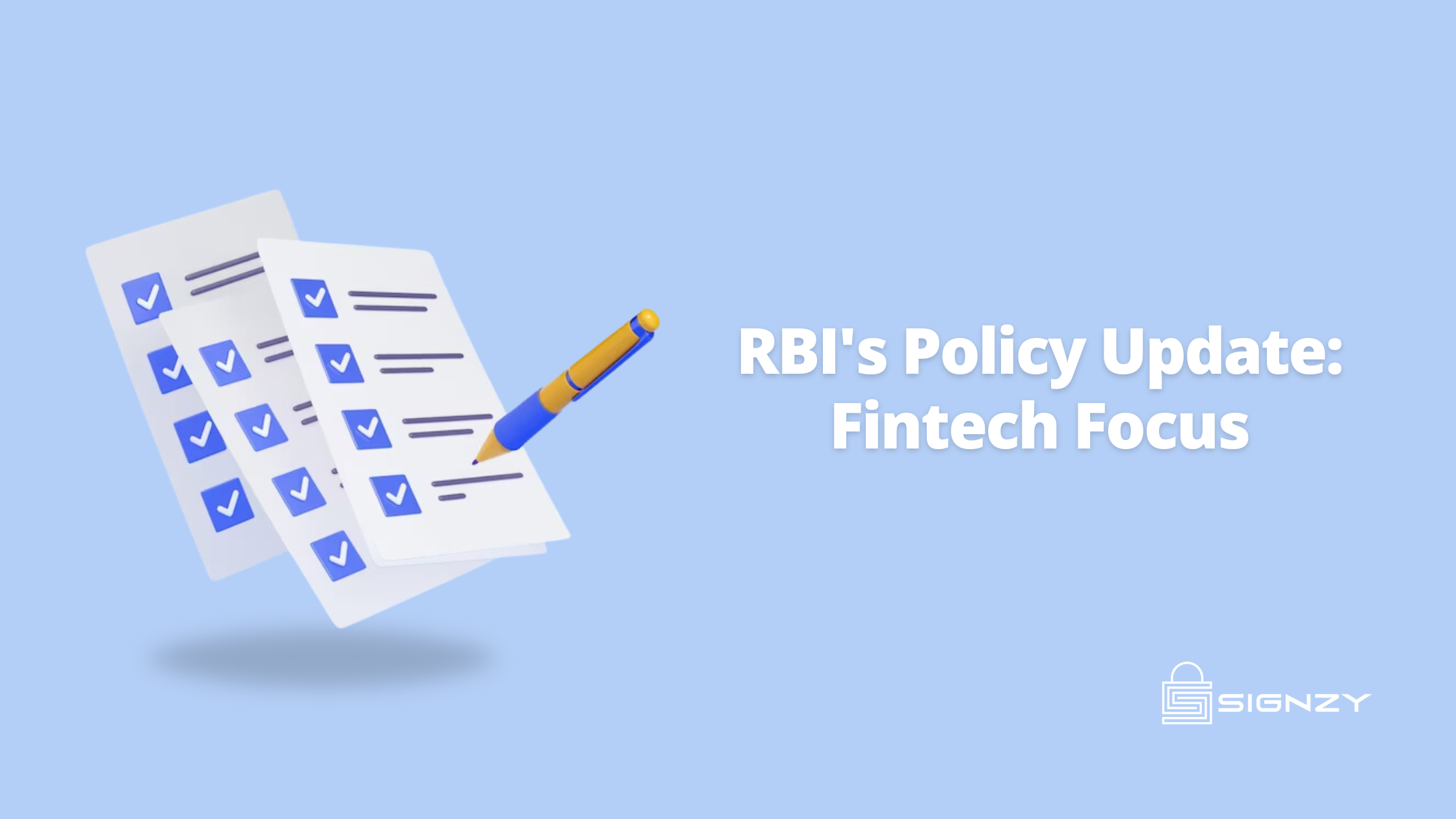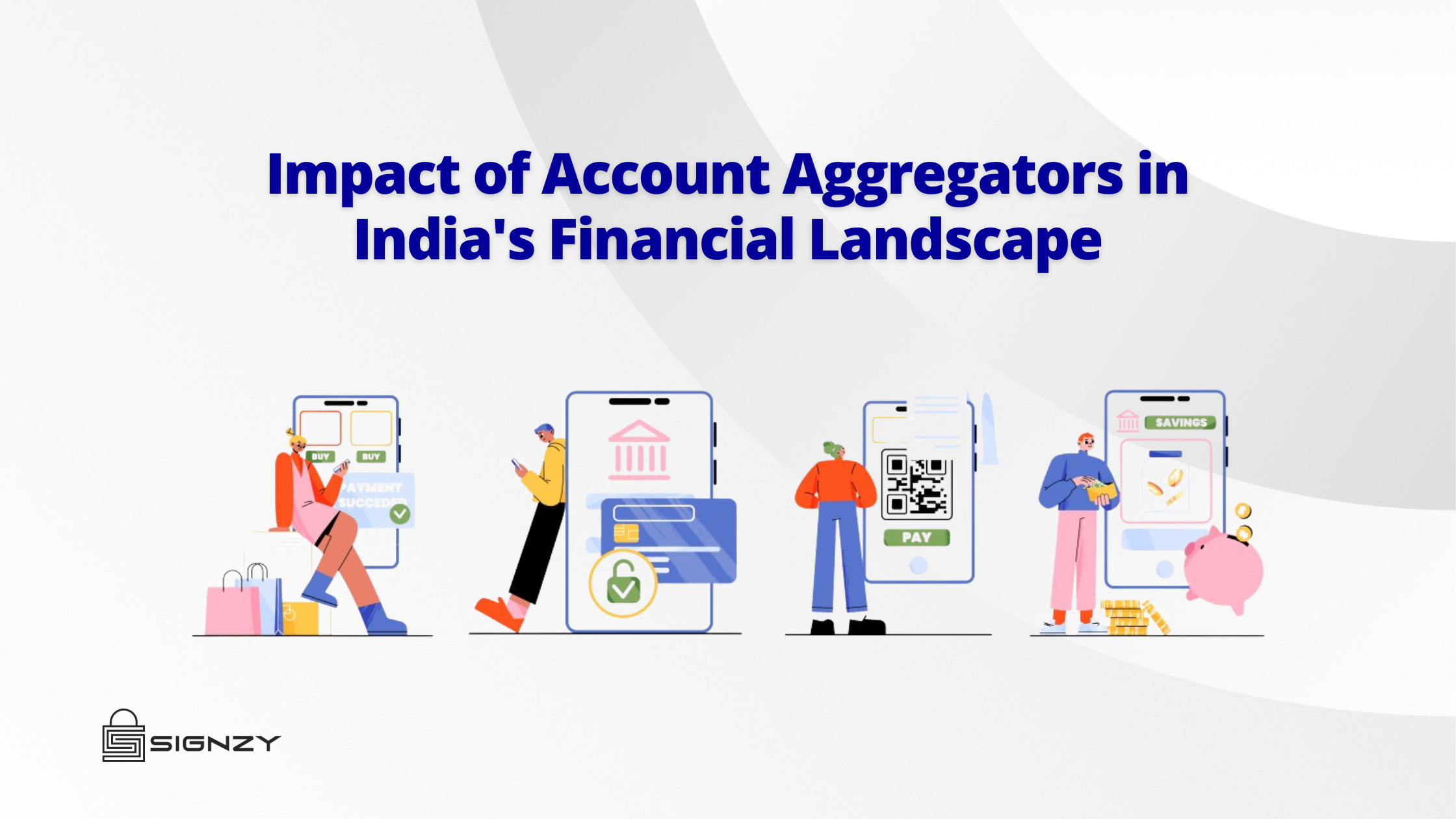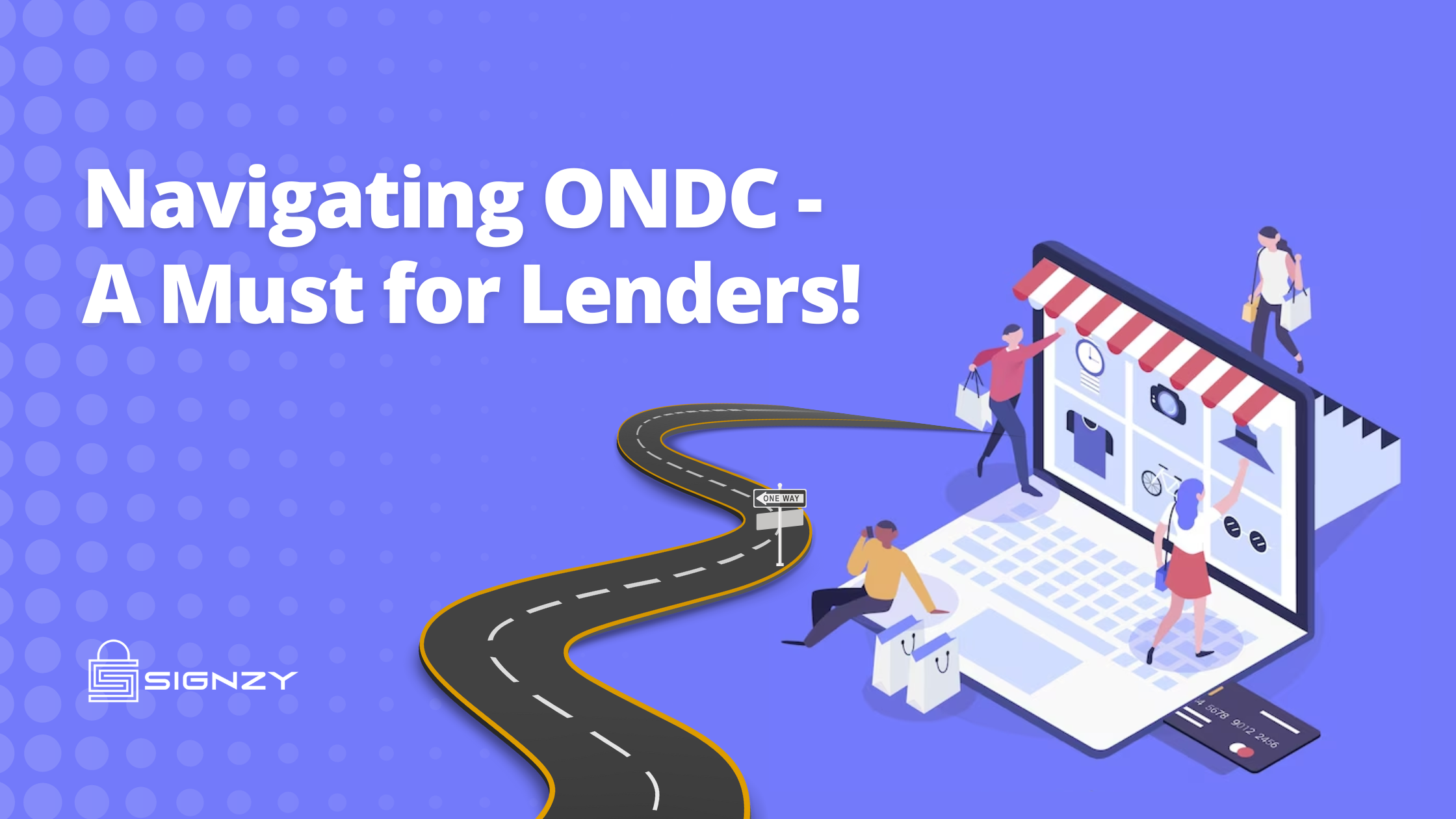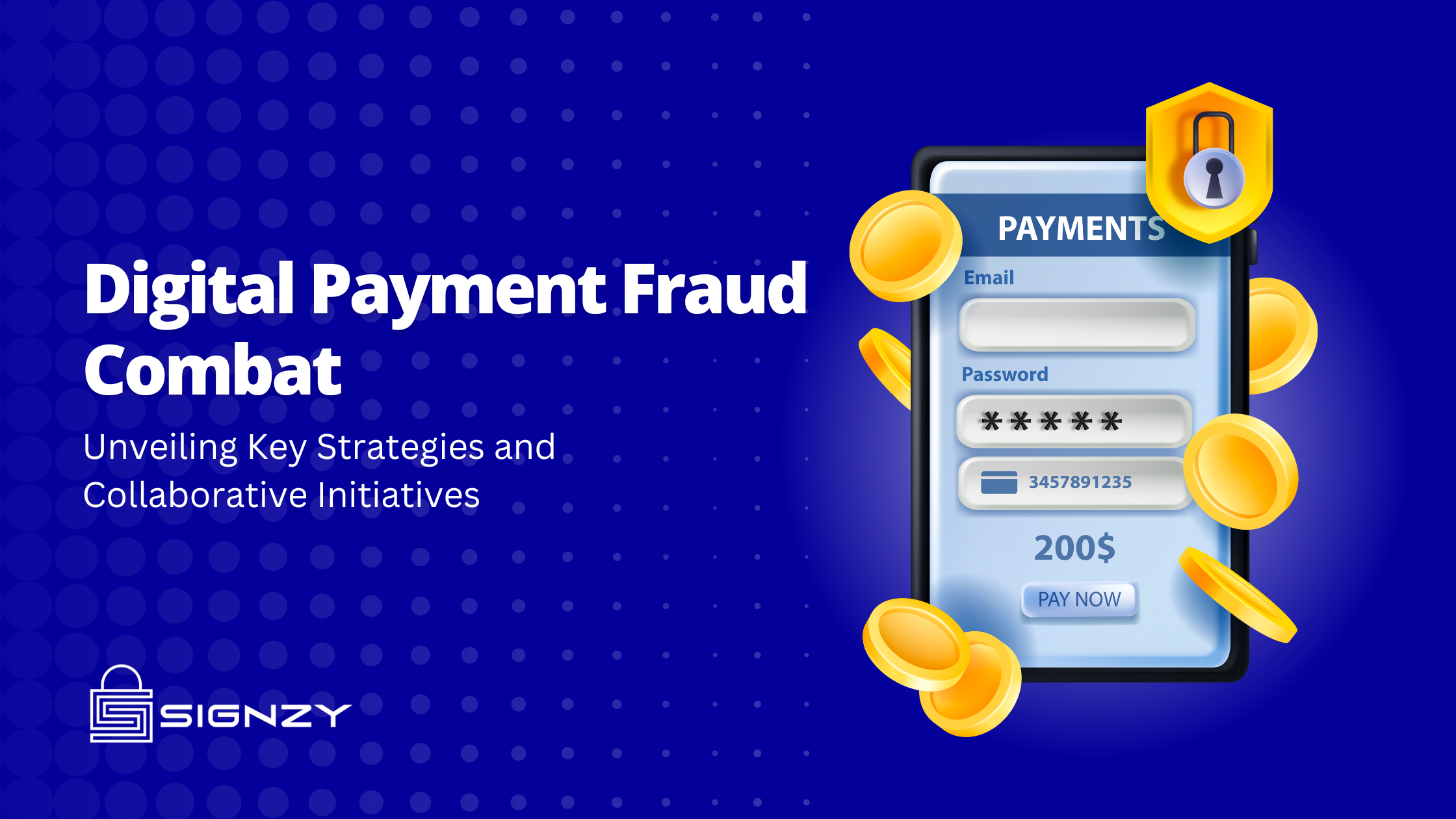Account aggregators have emerged as a powerful force in India’s financial ecosystem, transforming how individuals manage and share their financial data. These entities operate under the Account Aggregator (AA) framework introduced by the Reserve Bank of India (RBI) on the 2nd of September 2021 to regulate secure data-sharing practices.
Under this framework, account aggregators are facilitators between users and financial institutions, ensuring seamless access to consolidated financial information. They enable users to consolidate their bank accounts, insurance policies, mutual funds, credit card statements, and other relevant data onto a single platform.
The AA API offered by Signzy is revolutionizing how account aggregation functions in India. Signzy’s advanced technology enables secure data transmission while adhering to regulatory compliances. Signzy facilitates consent management through its comprehensive APIs and ensures that user information remains confidential.
One key aspect of account aggregators is their role as consent managers. Users have complete control over who can access their financial information and for what purpose. This allows individuals to grant or revoke consent anytime, providing enhanced privacy and security.
With these dynamic capabilities, account aggregators are reshaping India’s financial landscape by empowering users with holistic visibility into their finances while maintaining strict security protocols that safeguard sensitive information.
What are account aggregators?
In simple terms, they are platforms that allow users to access and manage their financial data from multiple sources in one place. Instead of logging into different banking or investment apps, users can now view all their accounts and transactions on a single dashboard.
These account aggregator platforms provide a secure way for individuals to share their financial information with third-party service providers such as lenders, wealth management firms, insurance companies, and more. By giving explicit consent through the account aggregator framework, users can grant these service providers access to specific data points without sharing sensitive login credentials.
Signzy offers an Account Aggregator API (AA API) that enables seamless integration between various data providers and consumers. With this AA API, businesses can easily retrieve customer financial data using standardized protocols and ensure compliance with privacy regulations.
The introduction of account aggregators has significant implications for both consumers and businesses. Individuals gain greater control over their financial information while enjoying convenient access to personalized services tailored to their needs. Meanwhile, companies can leverage aggregated data insights to deliver better products and services based on customers’ holistic financial profiles.
As India continues its digital transformation journey in the finance sector, account aggregators hold immense potential for revolutionizing how individuals interact with their finances. By streamlining data-sharing processes through robust APIs like Signzy’s AA API within a secure database like AA Framework, we are witnessing a new era of connectivity where individuals have unprecedented choice and convenience when managing personal finances.
How do Account Aggregators Work?
Account aggregators are technological tools that connect securely to customers’ bank accounts, investment portfolios, and credit cards. They use an Application Programming Interface (API) to collect information from these sources and display it in an organized format. The customer can provide consent for third-party companies to access their financial data through the platform’s permission settings. The data is defended by strong security measures such as encryption, allowing customers full control over who can see their confidential information.
Signzy’s offerings
Signzy has been at the forefront of revolutionizing the financial foundations of India. One such offering is our Account Aggregator (AA) API, which is crucial in enabling seamless data-sharing and aggregation.
The Signzy AA API provides a secure and efficient platform for individuals to share their financial data across different institutions. By leveraging this API, businesses can easily access and monitor all user accounts from various banks, insurance companies, mutual funds, and more in one centralized dashboard.
What sets Signzy’s AA API apart is our robust security features. With stringent protocols in place, including encryption mechanisms and authentication processes, sensitive information remains protected throughout the data-sharing process.
By acting as a trusted intermediary between users and financial institutions, Signzy ensures that only authorized parties receive access to specific data points about users, eliminating the ambiguity around data privacy. This level of granular control empowers users to make informed decisions about sharing their financial information while maintaining privacy and security.
Signzy’s AA API greatly benefits businesses within the finance industry. Financial institutions can gain valuable insights into customer behavior patterns by accessing aggregated user data through authorized channels facilitated by Signzy’s platform.
Account Aggregators as Consent Managers
The importance of data privacy and digital consent cannot be overstated in today’s digital age. With the increasing number of online financial transactions, individuals are becoming more concerned about how various service providers access and use their personal information. This is where account aggregators step in as consent managers.
Account aggregators act as intermediaries between individuals and financial institutions, allowing users to securely share their financial data with multiple parties without compromising privacy. By obtaining explicit user consent, account aggregators ensure that sensitive information is only shared with authorized entities for specific purposes.
One of the key advantages of using account aggregators as consent managers is that they provide individuals with greater control over their data. As a financial institution, there is no greater effort than empowering users. This level of transparency allows users to make informed decisions about sharing their data.
Furthermore, using standardized APIs offered by account aggregators simplifies the data-sharing process while ensuring compliance with regulatory requirements. These APIs allow seamless integration between different systems, making it easier for individuals to connect all their accounts onto a single platform.
Another important aspect of account aggregators acting as consent managers is the enhanced security measures they employ. They use advanced encryption techniques and multi-factor authentication methods to protect user data from unauthorized access or breaches.
Account aggregators play a crucial role in maintaining trust between consumers and service providers in India’s evolving digital landscape by serving as gatekeepers for financial data sharing. The AA framework provides a robust foundation for secure transactions while giving individuals full control over how their personal information is utilized.
As technology advances rapidly, it becomes increasingly important for businesses and consumers to prioritize data privacy and protection.
Conclusion
Account aggregators have emerged as a game-changer in India’s financial landscape, revolutionizing how individuals and businesses access and manage their financial data. With the advent of Signzy’s AA API and comprehensive offerings, account aggregation has become even more seamless and secure.
The Account Aggregator framework is a robust foundation for consent managers to facilitate data sharing between users and institutions. This simplifies the process and ensures that user privacy is always protected.
As India becomes a digitally empowered nation with open banking practices, account aggregators will continue to play a pivotal role in transforming the financial ecosystem. With increased adoption of digital technologies and APIs like Signzy’s AA API, we can expect greater consumer convenience while ensuring enhanced security measures.
Account aggregators are changing how financial information is accessed and shared in India. The growth potential for this technology is immense as it brings together various stakeholders – users, institutions, and consent managers – under one platform. As we move into an era driven by data-driven decision-making processes and digital empowerment for all citizens, embracing account aggregation will unlock new opportunities across sectors while safeguarding user privacy at every step!
About Signzy
Signzy is a market-leading platform redefining the speed, accuracy, and experience of how financial institutions are onboarding customers and businesses – using the digital medium. The company’s award-winning no-code GO platform delivers seamless, end-to-end, and multi-channel onboarding journeys while offering customizable workflows. In addition, it gives these players access to an aggregated marketplace of 240+ bespoke APIs, easily added to any workflow with simple widgets.
Signzy is enabling ten million+ end customer and business onboarding every month at a success rate of 99% while reducing the speed to market from 6 months to 3-4 weeks. It works with over 240+ FIs globally, including the 4 largest banks in India, a Top 3 acquiring Bank in the US, and has a robust global partnership with Mastercard and Microsoft. The company’s product team is based out of Bengaluru and has a strong presence in Mumbai, New York, and Dubai.
Visit www.signzy.com for more information about us.
Contact us directly!
